In the Studio: Fred P
One of deep house's finest producers goes deep on his processes and the gear behind them.
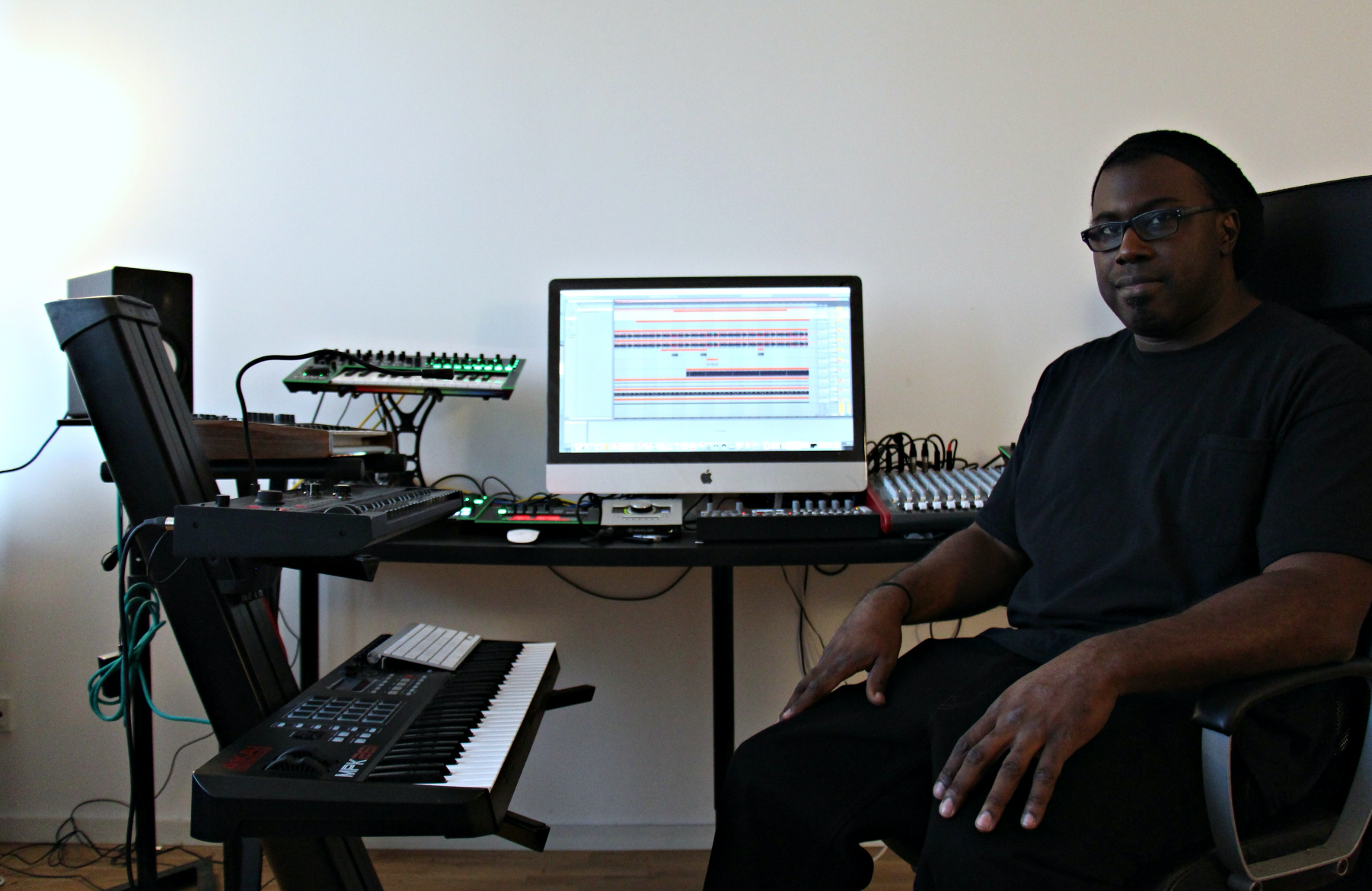
In the Studio: Fred P
One of deep house's finest producers goes deep on his processes and the gear behind them.

Those who have followed the development of house music in the USA over the past decade will certainly be familiar with Fred Peterkin—the artist better known as Fred P or Black Jazz Consortium. The New York City native, now based in Berlin, has been working on his own productions for over 20 years, releasing some of the finest soul-infiltrated four-to-the-floor house creations you’re likely to hear. Check out his discography and you’ll discover a warm, emotional vibe running through his works—as beautifully soothing as they are fit for the club.
Having spent his youth in legendary NYC clubs like the Red Zone, Sound Factory, and Tunnel—listening to the work of larger-than-life selectors like David Morales, Frankie Knuckles, and Danny Tenaglia—he learned that sometimes less is more, and that he should listen to his heart and soul rather than to the susurrus of the music market. Music, for him, is music more than a profession—it’s his “life,” he says. “I’m being deadly serious,” he adds, acknowledging himself that his statement does not appear especially original.
Almost all of the EPs and albums he has produced as Fred P or Black Jazz Consortium have been released via his very own label, Soul People Music, which has been in place for over a decade. As Fred P, he has also dropped 12″S on Jus-Ed‘s Underground Quality imprint as well as on Mule Music. It is on this latter imprint, too, that he’s shared a series of three LPs as FP-Oner, the objective being to reveal the jazzier, relaxed, and atmospheric side of his artistically deep house expressions.
As one of the finest purveyors of deep and soulful house music, it’s surprising just how little is known about Peterkin’s processes or the setup behind them. Following the release of latest LP on Mule, the Berlin-based artist opened up the doors to his studio—situated in one corner of, though very much taking over, his living space—to go deep on it all.
When did you begin producing your own music? Can you remember when you produced your first track?
Ye, it must have been about when I was 13 or 14 years old. Then it was hip-hop andexperiments at home. I would rummage about and find old cassette decks. I saw the movie “Beat Street” and the lead character would stack up these cassette decks and I just figured that that is how you do it. Anyway, when I found one, I would take it home and fix it and then stack them up to make overdubs — and, as you can imagine, the further you go the messier it becomes. But this gave me an understanding of multi-tracking—and then fast forward a couple of years and a family friend wanted to make a demo. He asked me to go with him to the studio even though I had no experience whatsoever—but I pretended like I did. I went to his studio and that’s when I really realized what music production is all about. We made like two demos—they weren’t great but it gave me the feeling that I could do this. So these were the first tracks that I actually made. Moving forward from there was just a matter of experimentation—and I didn’t start getting gear until many years later. I would go to my friend’s place who had the Commodore Amiga which started with music programs, and I started messing around— but I didn’t actually get deep into music production until my late 20s.
These were house tracks, right? Did these demos resemble anything like what you’re making today?
Yes, they had a similar essence, I think, because it all comes from the same place: wanting to hear something that I thought was missing.
So, like, I am heavily into processing and that comes from that period because everyone was doing this at this time—and I still get very deep into the layers and reverb and that stuff now. I had to learn how to make things sound good, and also possible for people to understand because what’s going on in my head is very different to what the listener might understand in the music—so my eduction began when I started producing hip-hop. I got to know the person who then became a mentor to me, and showed me how to put tracks together and to give them context and make them sound good. I did that for about four years in the early ‘90s.
Who was this character?
Greg Spooner. He produced the album Never Lose Your Heat for Noel Pointer in 2003.
How did you meet him?
So, my partner at the time and I were just fooling around in the studio with a Korg 01/W, a four-track Tascam Portastudio, and an AKAI S950 sampler. Basically, all I was doing was mimicking what I had heard, and I was still very unorganized. I didn’t have an understanding of a 16-bar verse or an 8-bar chorus, that kind of things, and I didn’t know about organizing an arrangement. And then I met Greg through an advertisement — which invited people to send in their demos. We submitted ours and Greg liked what he heard—he liked the tonality; he heard something in what I sent to him. He offered to work with me and then for the next four years I became a studio rat, following him to Patten Studios in New York when we used the studio after hours. That’s where I got my education, really. I got my first actual credit on Noel Pointer’s final album.
What was driving you at this point?
I was doing it because I love music and that was the thing that was saving my sanity at this time. I was certainly not doing it to try to get somewhere.
Before I began doing hip-hop, I was making house tracks and so I was making tracks to go with my records but CD burning didn’t exist back then—so I was making tapes of my house tracks. I didn’t have any engineering experience at the time. As a result, the sound quality wasn’t great so I was a bit disillusioned for some time, and I lost interest up until my partner at the time came to me with this opportunity. Only when I met Greg did I learn to engineer, and I then met other people who also helped form what I am doing nowadays.
Do you still find yourself drawing on these experiences with Greg when you’re in the studio today?
Totally. It’s part of my whole process because this was before digital—so everything had to go down to tape. Even though tape saturation was great, it wasn’t used as a means to create an aesthetic—it was something you tried to avoid. Tape is beautiful when used correctly—but what I’ve come to understand is that with different genres of music there are different ways you can push that. You could push the limit of it to create an aesthetic and I learned that through these early sessions. For example, with the Noel Pointer album: it was one of those deals where if you were to play it now, you couldn’t tell whether it was analog or digital because it was really well done. Now, as far as hip-hop went back in those days, it was all in the low end; it was all about tonality, so with tape you could really exploit that. Because of this, my ear is really trained for the low end and punchiness — and I still feel myself using these skills today.
When did you start to shift back towards house music?
It was a bit of an ark. When I was working with Greg, a bit of an opportunity came up with my partner at the time where our demo was to be signed. The deal didn’t happen because the label wanted us to do something that we simply weren’t built for and so at that period I stopped making music. I figured that everything in the scene was like that: you can’t really be yourself—so for two years I worked a job and just let it go. Then, I met my good friend who comes from my neighborhood. He really loved music and would come to me and give me these compilation tapes, and it kind of got me back into loving music in general. For that two-year period, I wasn’t really listening to music at all — I was avoiding it. But those tapes inspired me and I felt like I wanted to make music again.
However, these tapes were not like any music I was listening to before I stopped. He was bringing me some ambient stuff, with some Detroit techno, and some house music — but mostly broken beat and abstract stuff. They had all the tones and elements of all that I loved but in a different form and that inspired me to make music again. That’s when I moved into uptempo dance music.
“….those tapes inspired me to make something else. I was trying to bridge house, broken beat, and all this into the same thing—into something that made sense to me.”
So you heard these tapes—and you were just inspired to replicate it?
No, I was making house music before hip-hop, so those tapes inspired me to make something else. I was trying to bridge house, broken beat, and all this into the same thing—into something that made sense to me. At the same time, when I was making this stuff, it did have something to it because it did lead me into some offices for some meetings. But nobody knew how to market it — or how to give it an identity in the market because it was something else than the music of the day. To me, I was getting that feeling of disillusionment once again so I pulled out and just continued making stuff. I didn’t flow fully into house music until late ’99.
Why did you gravitate towards house music at this period?
I’d take these track to my friend’s place and we’d just discuss them together. He kept using words like “relative” — in the sense that most music that is played out, underground or popular, is relative to what preceded it. I didn’t understand what that meant until 1999—only then did I understand that less is really more. I then wanted to pick an area and then work to the motif of that area. I just chose house music.
Did you release any of this earlier music?
Some of it. In 2005 I started Soul People Music and at this point, the internet was getting bigger. There was a site called download.com and you could just upload your music for people to listen to—that’s it. You don’t make any money or anything. So, I did that because I was curious and I wanted to know whether these people who said my stuff was unmarketable were right. I uploaded two pieces and I got an overwhelming response, which gave me a great feeling. I then knew I wasn’t alone on this planet; there are other people who understand this. Immediately, started Black Jazz Consortium and began making my first album, which was Reactions of Light. Just because I love music.
And the Reactions of Light LP was the first actual record you ever released?
It was. It was a CD album, and it was going to be the last thing I ever did—before I got a job at the post office and floated off into mediocrity. That was the idea. But it changed things because it came out and I was able to get it into the Dance Tracks store in New York. I didn’t know how far the CD would reach but it went far and wide, and it got some flattering reviews—and people I didn’t think played it and it also charted some of the tracks. That gave me some real belief that I could make another CD.
You met Jus’Ed around this time, I believe. How did that change things?
He made it simple for me. He explained everything to me—including how to actually make physical records. So, for the record, Jus’Ed was instrumental in teaching me how to make records. I didn’t know how to do that until he came into my life. I took that on board and have kept it in mind ever since.
“I don’t really prescribe to having a lot of gear; I only need the gear that has the tonality of the emotion that I like to express.”
What setup did you use for Reactions of Light?
I used a Korg TR and an AKAI S1000 and Cubase.
That’s a minimal setup.
Super minimal, man. But I made my first 10 records with that same setup.
That’s a lot of records. Did you not feel the need to switch things up to keep it fresh?
Not really. My current setup does everything that I’d like it to do and it’s extremely flexible so I can expand into other things.
Now I am using Ableton—and this has changed my philosophy of how sound works. For example, my setup when I first started was extremely limited which pushed me as far as my abilities go to express emotion with what I had—and that was very good training because it taught me to grow and develop my voice. When I graduated and found Ableton, it took that voice and multiplied it by the universe — anything you can think of you can do with Ableton. It is super versatile. That doesn’t require you to have so many things because you can take one instrument and make it sound like a bunch of different instruments — and you can take one tone and change it into a bunch of other tones. I don’t really prescribe to having a lot of gear; I only need the gear that has the tonality of the emotion that I like to express.
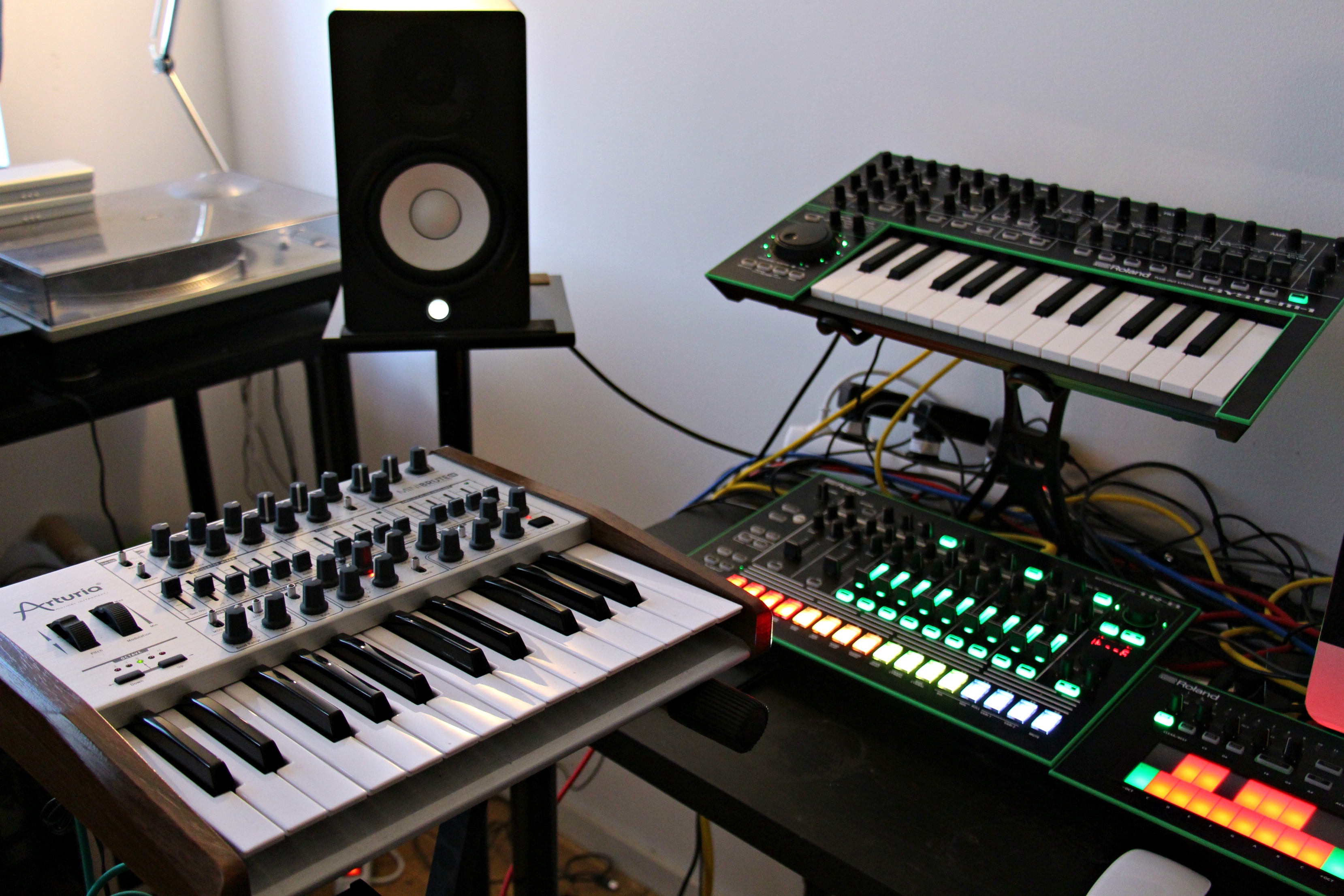
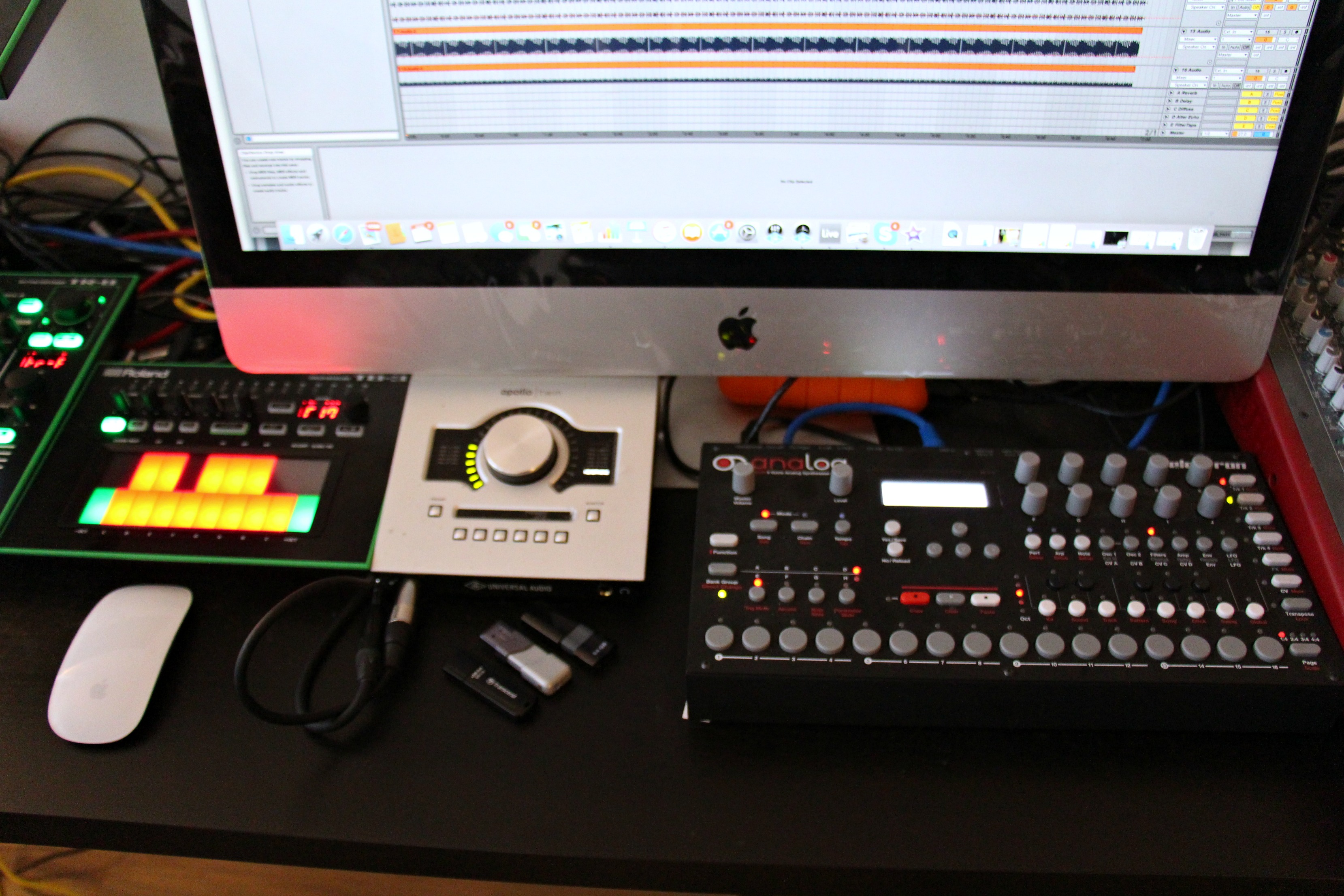
Is your setup still very minimal today?
Yes. I am very comfortable with minimalism but I like the idea of saying the same thing in a few different voices. So, when it comes to synthesizers: I don’t have a tonne of them but the ones that I do have create this variety for me. But the most important bit is the processing and the arrangement and the mixing — that’s usually where the magic happens. If you capture something really good then the mix is only going to enhance that and highlight how good a piece is. I mean, these things can be done on the most simple of setups but it really does have a huge impact when it’s done correctly.
What are the main synthesizers you use today?
I use virtual synthesizers in combination with analog synthesizers because this creates something different. And that’s what I am all about: something different.
I did the Roland project and they were kind enough to give me some of the gear. I really like the System 1—it’s a freaky machine when you get it. I also have some Dave Smith boxes and my most recent acquisition is the Korg Minilogue which I’ve just added to my live setup. It’s a great piece of gear. I also got the Electron. I really like it—you could produce an entire album on it. You can dump everything on an SD card and then put into right into Ableton which makes me super happy. I also use a MiniBrute and some smaller synths.
How do you decide when you buy a new piece of gear?
It is really all about sounds. If I hear something and I like it then I instantly want to know what it was made with. For example, I knew about the Minologue for a while but I wasn’t interested in it until I heard I piece and I figured that I could really use it.I was into the Volca Kick for a long time but I didn’t know it was made by the same people as the Minologue—and when I heard that I wanted to know more. I heard the piece and knew that I could use it because it was relevant to the music I’m making.
So you will listen to music, hear a sound that you like and you’ll look to find the instrument behind it?
Usually, it’s on YouTube, yes. I am very much into YouTube when it comes to lectures and stuff; I like to learn as much as I can.
It’s interesting that you base it all on sounds.
Well, at the end of it all, when it comes to a record or a performance, what is important is what hits your ear and how well you can translate a feeling. That’s the bedrock of it all so I have to always be looking for certain sounds that’ll allow me to be true to what I do.
Are you aware of certain sounds that you’re looking to introduce into your music?
I am trying to get to something in my head that doesn’t exactly exist yet — but the more I work on it the closer I get, I think. Then when I think I have got it I don’t actually have it butI’ve discovered something else. So the journey of that search is the excitement. I am not so quick to buy lots of new equipment but the things that I do buy all help me get closer to this thing in my head.
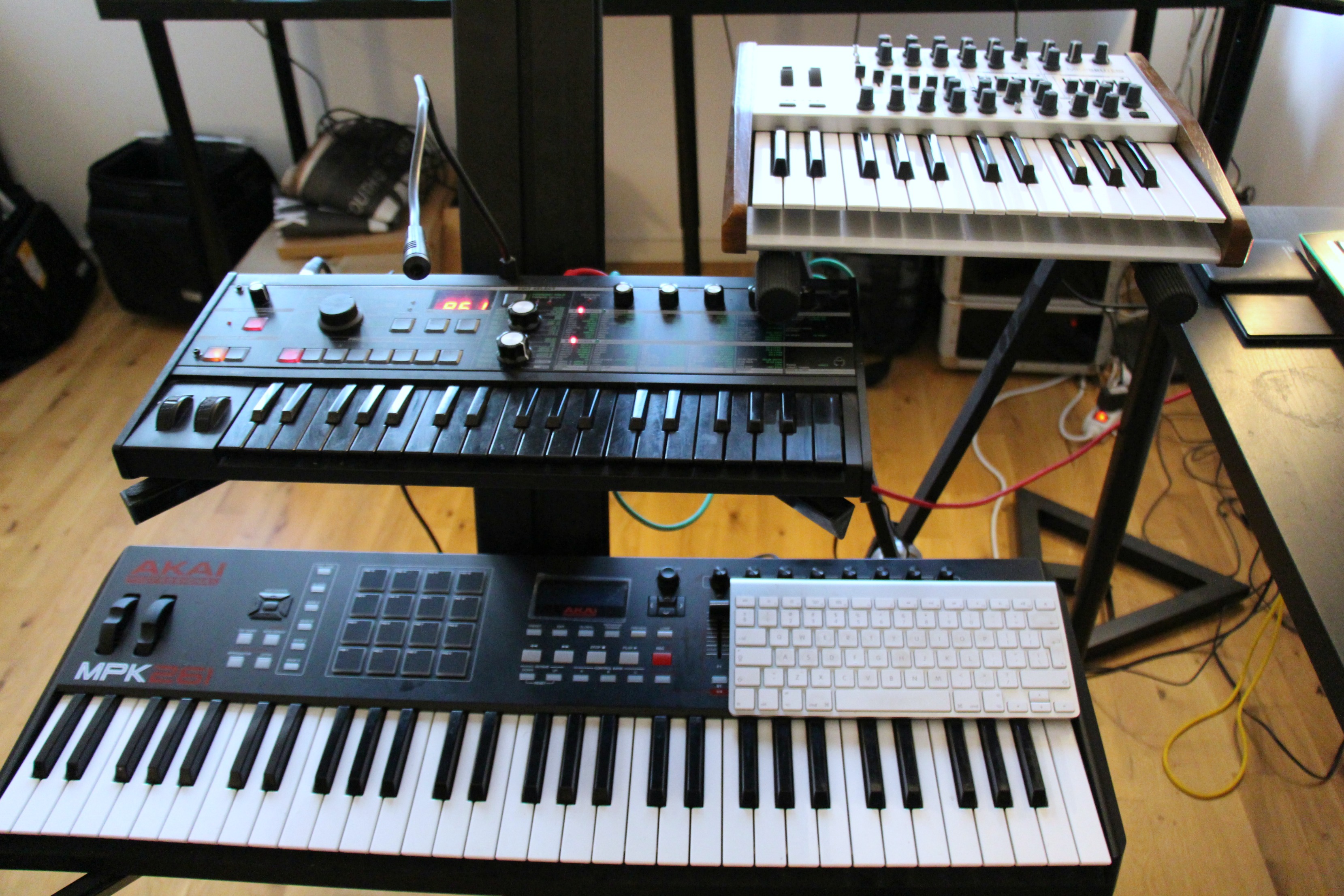
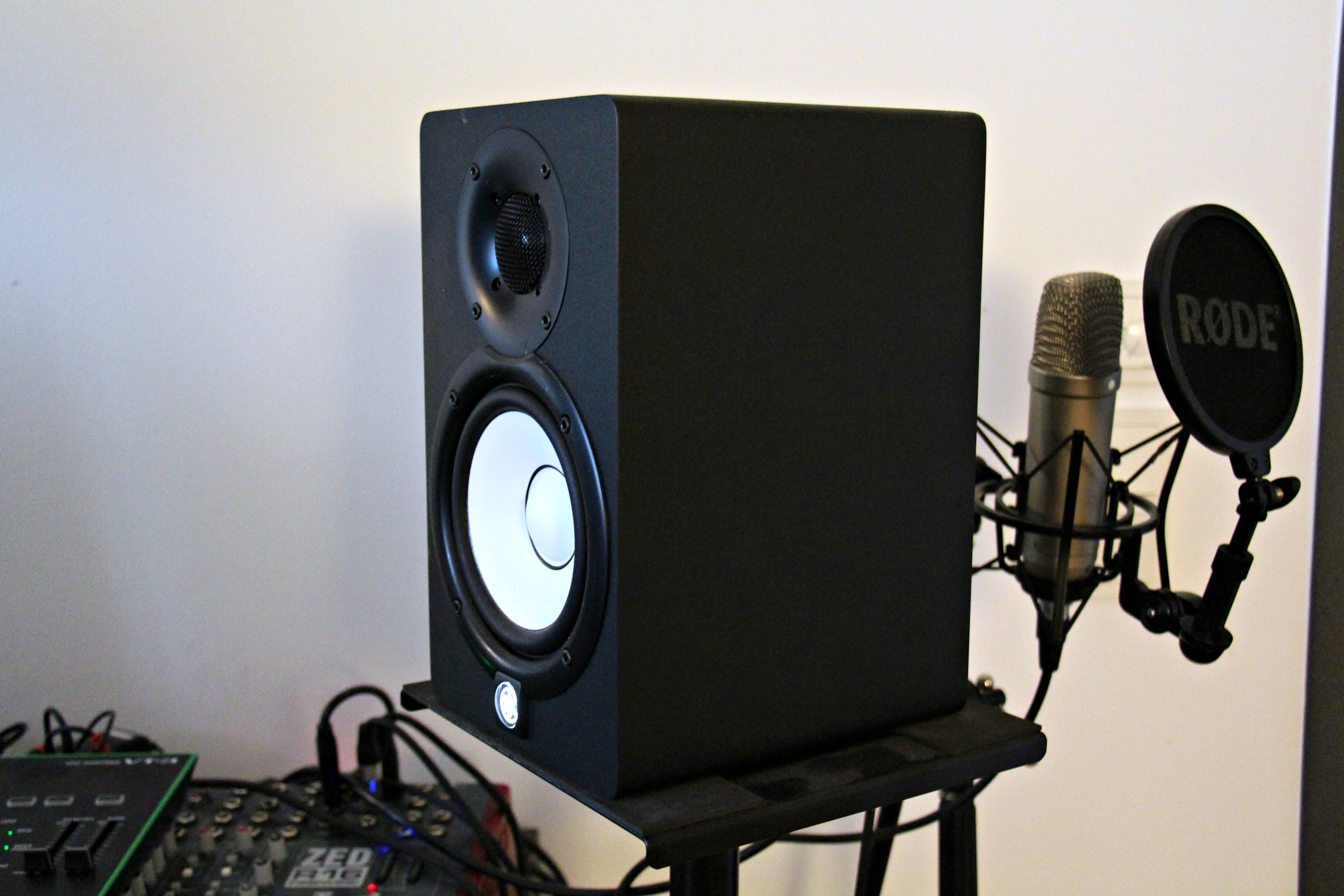
You’ve made some very special records in your career—”New Horizons” and “No Looking Back” are good examples. Did you know they were special when you made them?
I didn’t know they were going to be as special to other people. They were special to me because of what was going on with me at the time.
“New Horizons” was written after you gave up alcohol, right?
Yes. It was a dark and pivotal time because I could have started drinking again at the moment when all the stuff was going on. It was a choice to not do it and to be able to stick to it and have that fortitude—that was what came through in the record, and that’s what makes it so difficult for me to play it. All the feelings of that time are encapsulated in that song and I relive it every time I hear it.
Do similar things apply to “No Looking Back”?
Yes. Again, it was a pivotal time where I was making a choice that would affect everything in the future. So, I didn’t know that these records would resonate with people—but for me, they had tremendous significance with who I am.
“There is talent and then ability: the thing that people were drawn to was just the raw talent—but then when I stopped drinking and began to focus that talent then became an ability. Then the ability began to grow.”
Did quitting alcohol affect your processes?
Yes and no. Before I stopped drinking I didn’t have as much focus—I made cool stuff, no question about it, but it wasn’t focused because of my state of mind. I was drinking hard back then so the levels of my understanding of focus were skewed because I wasn’t in the mindset to translate properly. However, there is talent and then ability: the thing that people were drawn to was just the raw talent—but then when I stopped drinking and began to focus that talent then became an ability. Then the ability began to grow.
Is there a similar story—or emotion—behind all of your records?
To a certain degree, I would say yes. With the earlier music, the story was my day-to-day living.These songs are like mantras that I was holding on to get through my struggles. My job was to document that and put it there for other people who were having the same problems. These days, it’s the same thing, but I am in another place and the challenges are different — and as an artist I believe that you take your experiences and you document them, leaving them for someone else who has the same issue. You hope that this will help them to evolve and grow with whatever they’re trying to express. Similarly, I look for that in other artists that do this music on this level—here is something you can use that’ll direct you to this place or that place. Most art that stands the test of time has that. I spend most of my time in the studio trying to get at the core of that.
“I know my voice intimately and I always know what I want to say. The challenge for me is finding how to say it and also making it relevant for people to understand.”
Do you ever struggle to find this emotional pool to draw from?
Not really. When I am not feeling it then I won’t do anything—I’ll go to a movie or just play music until I feel like working on something. But when it comes down to finding this emotion or expressing myself then I don’t have a problem; I know my voice intimately and I always know what I want to say. The challenge for me is finding how to say it and also making it relevant for people to understand. I’ve dedicated my life to this.
So do you have a certain emotion in mind when you begin producing a track? Are you consciously thinking of a certain time when you begin?
I don’t go into the studio with a preconceived idea. I just open up the studio and what comes out is a reflection of these emotions. From the beginning, it’s really just chasing this thing that I feel is missing. It’s that but now at a completely different degree: now I am sitting there chasing that thing. It’s my responsibility to make it so let’s get to work.
What is this thing that you’re missing? Can you define it?
Look at it like this: you call a record store and you hear a whole plethora of things and then you go to the record store and you hear some of it but then a lot of it isn’t there. That’s what it’s like for me: there are some amazing things in the record store but there are also things that are missing that would make it all come together. That’s what I am attempting to do.
Do you think you’ll ever find it?
I am finding it piece by piece. Each project is part of this conversation.
Is this constant search why you have such high output?
The reason for my high output is not because I want to cover the globe with good music. It’s because of this: how many records come out each week? Probably 1,000 or so. Out of that 1,000 only about 10 or 15 will reach the top—will hit the ceiling. Out of that 10 or 15, only about two will be talked about in years to come. So not everyone is going to see all of these releases. That thing could be in any of these records. And, for me, I went through a period in the late ‘90s when I wouldn’t listen to electronic music because it was such a bad period for it. It was a drought; however, I recognize that now I am in a position to stop that drought happening again—so I don’t want that drought to happen for people like me who live for this music. So I do my best to keep good music out there.
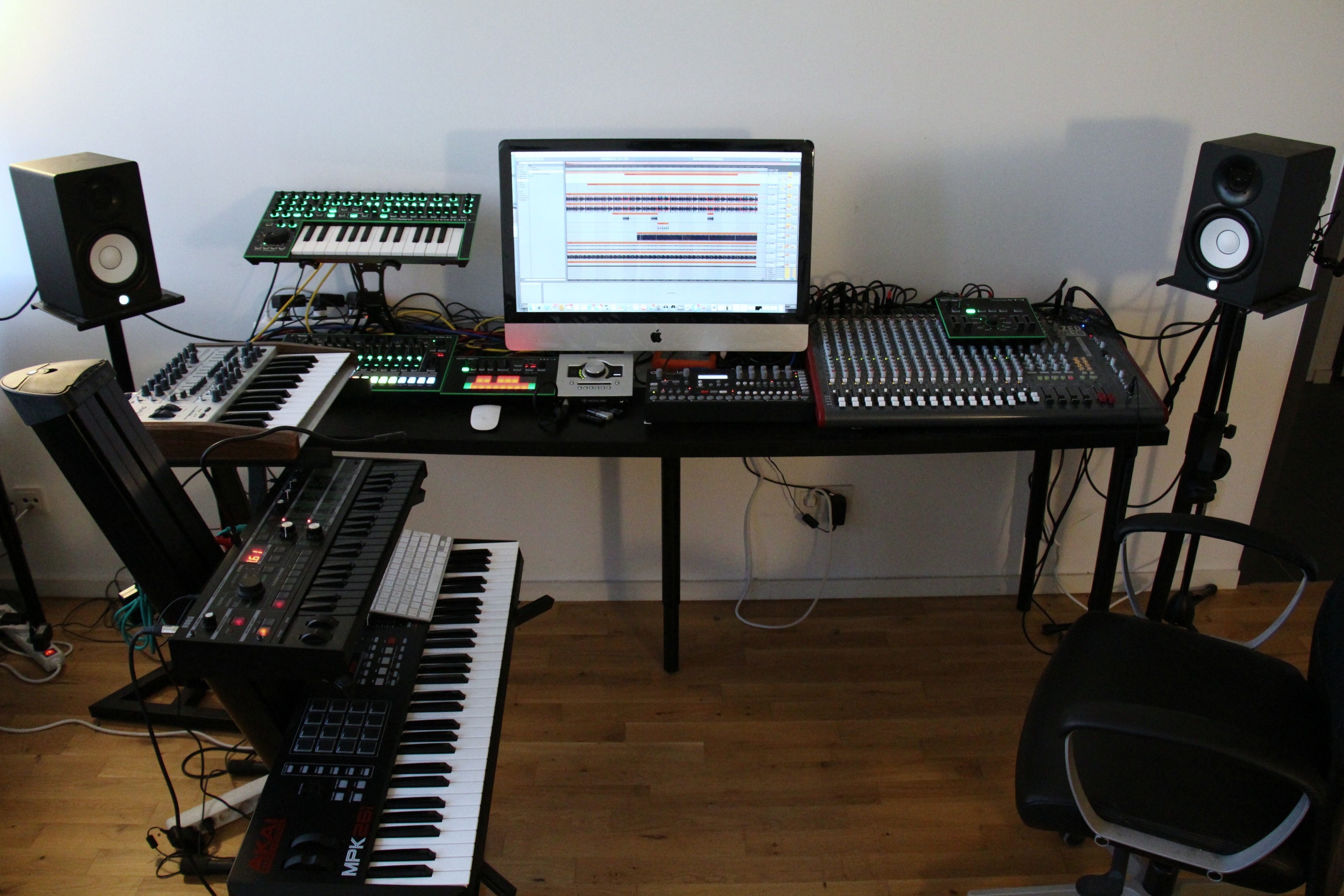

Where is your studio?
It’s in my home. My home is my studio. It’s my living room. It’s always been like this: it’s studio first and then living space based around the studio.
It brings a whole new meaning to music being your life.
Yes. I am not kidding when I say that. I am very serious.
What’s your day-to-day routine like for spending time in the studio—do you get up and go straight to work?
That’s exactly how it works. I get up and do my morning routing—eat and have a coffee over my emails. Once that stuff is out of the way, I sit in a chair for the next 10 hours and work on whatever project I am working on.
Do you work on it track by track or do you have a series of projects on at any time?
Sometimes it is a series of projects. Just recently, I was working on the next Black Jazz Consortium album and also an album for Mule. That was recently basically just two months of 10 hours production per day. I was not focusing on which track was going where; I was just thoroughly getting all of it out. I was just trying to get all of this material out, and that took about two whole months. If you can imagine doing that from Monday to Thursday, then playing on the weekend, then coming back and doing it all again — it was pretty intense. But what came out of it was some great stuff, I think. This album for Mule is the last one in the trilogy is the synthesis of the two that came before.
And tell me about the next Black Jazz Consortium album.
It’s just a huge evolution from the first. The first one was called Reactions of Light and this new one is called Evolution of Light. This is 10 years later and it’s supposed to show what that original material would be like in the present day. I think it’s a very ambitious piece of work but I love it because it’s super honest.
How do you determine which alias to use for your music?
When it comes to Black Jazz Consortium these days—since there hasn’t been an album in a few years under that moniker—it’s definitely jazz orientated. There are actually jazz pieces on the album, as opposed to me just using the word. I go through different forms of it; I go through the various genres of electronic jazz. There are only really two house tracks on the album.
Before you start a track, can you determine which alias you’re going to release it under?
Absolutely not—unless it’s a remix will always be Fred P. It’s just what comes out: if it’s more techno then I will release it as Anomaly; or if I am in a raw mood then it’ll be FP-197; if I am in a house mood then it’ll be FP-Onur. I can never know is going to happen when I sit down in the chair.
Do you like this unpredictability?
Definitely — I like the element of discovery. That’s what keeps you excited. When you know what you’re going to do then there is no excitement. You can sit there for hours and trash comes out and then the last 30 minutes you make up for the rest of the day.
“The only material that is really wasted is poor sound selection—when something clashes with everything else you put in the tracks. The material will then be disharmonious; this sound doesn’t go with this sound.”
It must be quite frustrating, too.
Yes, but I’ve worked out that everything can be worked out in an arrangement. The only material that is really wasted is poor sound selection—when something clashes with everything else you put in the tracks. The material will then be disharmonious; this sound doesn’t go with this sound. That, for me, speaks to something outside of music; that speaks to how focused you are and that can happen to everybody because life isn’t easy. These times aren’t the best for sitting down and working on music.
How do you deal with these times in the studio?
You have to learn to take your ego out of the equation. So many times I will go into the studio to produce a dancefloor track and end up with a beautiful ambient track, and that happens because I take my ego out of it.
How long does it take you to produce a track?
It depends. When I am inspired I can get a track done very quickly because the track is there and it just needs the technical part to be completed. If you had to use a painter as an example: he has a painting his imagination. It’s already there in his imagination but he has to complete the technical part so that everybody else can see it. It’s the same thing with me; it’s a form of alchemy, in a way. You already know what the thing is you’e trying to make but you have to make it relative so that other people can understand it. That can happen in five minutes if you know your tools.
It’s when you’re searching that you need the time — that’s the part that takes 10 hours in a chair, and that’s the part I like the most because you’e going into undiscovered territory. That’s the scary part because that’s when you can make something that’s not relevant to anything else that exists in a musical world. It’s terrifying for people to try to market that but when you present it to the right people then it gives them the excitement to do the same thing themselves. Miles Davis used to tell his musicians to “Play what isn’t there.” That’s a beautiful thing to tell someone. He’s not telling you what to play; he’s telling you to do you in the space he has created. It’s very liberating for an artist — and the 10-hour sessions are borne out of that.
It’s funny because a lot of artists say that their best works are the ones that come out in a day. So do you find it to be the opposite?
I think it’s a bit of both. It’s nice to be able to just have it come out super fast but it is more gratifying to know that you’ve made something original — that you’ve added some vocabulary into the ongoing musical conversation.
____
All photos: Yuko Asanuma

